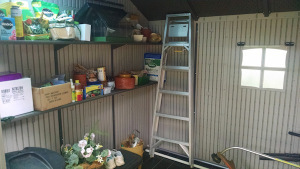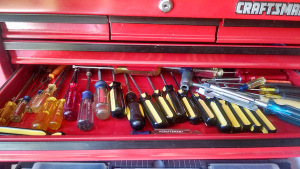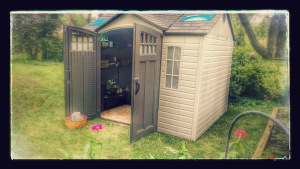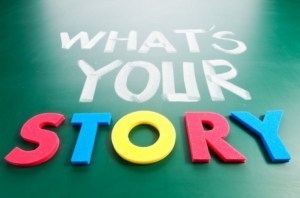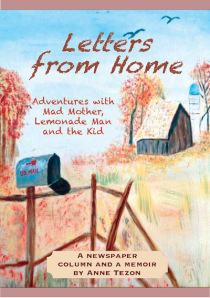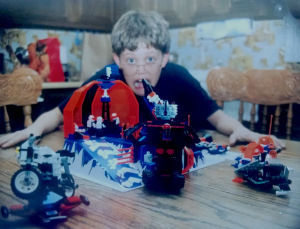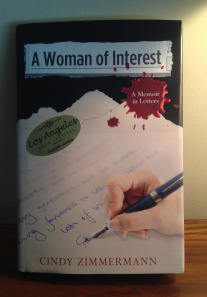Anne Tezon Spry's Blog, page 6
September 18, 2014
Old dogs can learn new writing tricks: True confessions of a new author
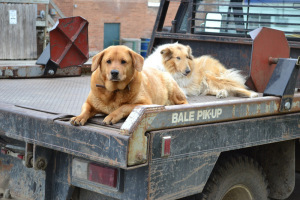
When you retire, the learning doesn’t stop. It’s just time to stop chasing cars.
From the safe perspective of time and distance, we can all review our lives and notice the milestones, the pitfalls and missed opportunities and vow to do better in the future. This is especially true of writers.
In my own case, the year 2014 has been as chock full as someone with ADHD could possibly cram it (I have not been officially diagnosed, but it would excuse or explain a lot of my habits). Here’s what happened in the first nine months of this memorable year:
• I published a memoir on Smashwords, Createspace and Kindle.
• I went on Medicare and heaved a huge sigh of relief in saying good-bye to my former $5,000 health insurance deductible.
• I became a first-time grandmother.
• I absorbed the equivalent of a college course in book marketing and social media skills.
It’s the latter that compels me to sit at the computer on a Saturday morning to pour out my soul and suffer through a painful episode of True Confessions of a New Author.
In my arrogance, I assumed that my experiences as an editor and newspaper publisher for 30 years, (and as someone who helped others publish their books), would make the transition to book publishing relatively painless. (Ring the X button here).
Here is what my arrogance led me to . . .
• Knowing I would be publishing print and electronic versions of my memoir, like a dummy, I had two files going . . . a Word file and an InDesign book file. When it came time to make revisions to those files, you writers might be able to imagine the nightmare that ensued–two sets of corrections! Like the multi-tasker I have always been, my practice was to make the corrections in Word on the PC laptop on my left, then find the same spot on my InDesign file on my iMac in front of me. That got old really quickly.
• I got lazy and began making corrections on the PC, knowing that I could copy and paste on the InDesign file. That was fine until I got dizzy with all that pasting and pasted the same content or parts of content twice. Did not discover that until the book was published in all its formats.
• While I was not so arrogant as to assume that I could catch all my own mistakes and had three beta-readers and a retired English teacher as the ultimate proofreader, there were some electronic glitches. Only now, after publication, do I realize that the corrected file I got from the latter did not arrive with all the side annotations for corrections. Sigh!
• I was so tired of multiple revisions, I just wanted to get the book published and get it out of my 24/7 awareness. Off it went to Createspace and a few days later, my proof arrived. Made corrections and ordered 50 print copies. When the poor UPS man nearly developed a hernia delivering two heavy boxes to my doorstep, I gave my son a copy and he found a mistake on the first page he opened. Later, a professional friend sent me a cryptic text that read, “Everyone knows you’re not supposed to end a sentence with a comma.” Well, curses and damn these bifocals!
• In the middle of all this turmoil, I’m frantically reading everything I can find online about marketing #books and indie publishing, in addition to subscribing to various email lists. I participated in a wonderful and inspiring virtual marketing seminar by Dvorah Lansky and immediately learned that any author thinking they will make even enough money to cover their costs on just one book is sadly mistaken. No, the prevailing theory is that you must publish multiple books, including several eBooks. Okay, that makes sense. But it doesn’t stop there. You also must dedicate yourself to morphing into a social media guru, leaving room in your already full schedule to additionally acquire skills to do podcasts, webinars, seminars, personal coaching and develop e-courses . . . in your sleep perhaps?
I wish I had read author Anne Allen’s blog, “Five Biggest Mistakes New Writers Make” http://annerallen.blogspot.com/2014/09/the-biggest-mistake-new-writers-make.html prior to publishing my memoir. It would have saved me some frustration and time.
With my background in newspaper publishing, and with lots of new knowledge about the book publishing industry, I have now discovered some startling similarities between the two fields. And here is my earth-shattering conclusion: Newspaper, magazine and book publishing are changing at warp speed. In the last two decades we’ve gone from fields that were predictable enough to allow writers and publishers to take their money to the bank through traditional marketing and sales channels. In those good ole days, we were all specialists in our niches. In the newspaper business, we relied on cameramen in the pre-press rooms to tweak our photographs, mask around images to cut out backgrounds and otherwise make us look good to our readers. We had reporters, feature writers, editors and publishers with clear lines of demarcation and predictable job descriptions that seldom blurred.
Today, at least at community newspapers, everyone knows a little about features, news, photography, advertising and even videography. Now, instead of publish or die and meet your deadlines or die, journalists know they need to use social media or die. They also must know the meanings of terms like media convergence.
I am discovering similar patterns and challenges in book publishing in the new indie-driven market.
Way back when, in the infancy of my newspaper career, all I really wanted to do was write. But I had to learn how to sell advertising too, among sundry other skills. Now, in my second, late-advent career, all I want to do is write, but there is little time for that when your days are consumed with learning new tricks in the hope of someday selling your writing.
It’s enough to make an old writer want to die and be reborn as a 30-year-old.


August 13, 2014
His shed, her shed: Segregating your stuff to avoid retirement confrontations
A place for all my gardening stuff.
In my wildest dreams I would have never imagined that retirement would mean a shed for me and a shed for Lemonade Man. Yet here we are, less than a year after my official departure from 9 to 5 routines, divorcing his tools and lawn equipment from my garden seeds and outdoor entertainment paraphernalia. He has his shed in the back yard and now I have my own little plastic storage unit close to the house.
Admittedly, moving from 15 acres with a large barn and two sheds to our city home required significant downsizing, with the aid of one moving sale and two subsequent garage sales in the new place. Still, we have an excess of stuff, much of which would qualify my spouse for an appearance on an episode of Hoarders. He cannot part with stuff he may need in a few years.
But how many screwdrivers does one person need anyway?
Recognizing my Virgo penchant for organizing and compartmentalizing, he made the recent mistake of seeking my help in the garage. Not knowing the specific uses for all the items that landed there in our move from country to city, I merely grouped the 29 screwdrivers together in one drawer of one of his massive tool chests. Likewise, all the concrete tools went in the bottom of another chest, the power tools in a cabinet . . . you get the picture. Unfortunately, He now needs a navigation app to find his stuff.
My reward for making the garage a neater, cleaner place was to finally have a cabinet of my own out there for kitchen excess, like my large roaster that only gets hauled out at Thanksgiving.
The Her shed was touted as another reward for being such an organization freak. Truth be told, he was tired of skinning his shins trying to get around all the junk in his shed. So the last time we made a trip to the local discount club, the season closeout shed sale caught his eye. In two days we had a shed assembled and ready for my stuff.
Isn’t it cute? I can already see my soon-to-be-born grandson using it for a playhouse.
His shed towers over mine in solid wood and air tight superiority, complete with gutters and an access ramp. My little thing looks like a doll playhouse that threatens to collapse in a 50 mph wind. But it sure is cute and I don’t have to hike up a hill to get to mine.
Here’s his shed . . . stable, imposing, sturdy. Is this a metaphor for male, or what?
It could soon take on an unexpected role as an adult timeout room. We are learning in retirement that a husband and wife are not meant to occupy the same space 24/7. Many of our friends who have gone down this road warned us about the dangers and pitfalls of a new familiarity breeding a certain degree of discontent.
So, the next time Lemonade Man complains about not being able to find something in the garage, I can leave him fuming and go organize my new shed. It may soon boast a rocking chair and a reading lamp, perfect for a long pout.

Now he can work on his mower without knocking over a whole wall of tools.


July 30, 2014
Just a little promo
July 21, 2014
We all share a responsibility to record our family narratives
Do you know where your parents met? Do you know the story of your birth? Do you know where your grandparents grew up? You should. It’s part of your enduring family story.
I blame my mother. She’s the one who got this memoir stuff started several years ago. It’s almost like she continues to chide me from the grave to continue her passion for family storytelling. Now that my own memoir is launching Aug. 7, I find myself thumbing through her personal saga to find reinforcement for my efforts. Some of her words have been imprinted on my heart and spur me in encouraging others to tackle this monumental but necessary task. She wrote:
Seldom will the voices of our ancestors sing to us from the grave unless we listened to their songs while they were alive. Each generation is bound up in the composition of its own symphony. Those of us who fail to recognize that the underlying theme has already been laid down by our parents and grandparents will likely pen many discords before our music ends. It is almost certain that our children and grandchildren are not much interested in our composition. When they are finally ready, chances are we will not be here to sing the song of our life. It is therefore vital to record the stanzas as they were written. It is our legacy and our responsibility.
I recall Mother’s early research efforts for the telling of our family story. I called her Motorcycle Mama because she learned to ride a motorcycle when she was in her late 50s. The following column I wrote for my newspaper at the time appears in my own memoir:
Motorcycle Mama has reached a point in her life when she finds it important to record family history. Last week she mailed me several pages of a computer printout that represents her nascent efforts. It was fascinating reading, but maybe only because it was about my great-grandparents. It contained some colorful details, culled from Mother’s childhood memories, of visits with aunts and cousins, and of the bountiful meals served. Like other Depression era children, my mother came from a house where milk was rationed and running water was a luxury. Thus, lots of food made a big impression on her.
This first effort at recording our family’s place in the history of the country has left Mother frustrated at the gaps in her memory and in the lack of information she has to work with. She recalls that someone in the family may have my great-grandfather’s naturalization papers but can’t trace them. He and a brother, orphaned in Germany, came to the U. S. in the late 1800s. Grandpa Otto Hoffmeister homesteaded near Topeka, KS while his brother remained in Philadelphia. No one knows what happened to that brother. Now it seems important to find out.
What prompts this search to fill in the family tree? There must be a time in everyone’s life when they face the raw impermanence of things, resulting in a newfound drive to leave a record of the family legacy before it’s lost forever.
My brothers suddenly want to know where they came from. That could have something to do with some feelings of the transience of their own lives these days. Youngest brother Tommy, who is fighting rejection of Mother’s donated kidney, wrecked his car and lost his home in a tornado in the past few weeks.
Oldest brother Jim lost his home last week in a fire, while middle brother Rick is not good at taking care of his health in the wake of a massive heart attack at age 30.
I guess if we know where we come from and who we are before we leave the physical world, it might be easier to let go. The urgency to research our roots becomes even more urgent knowing that memory and mental capacity diminish with advancing ago. Plus, you never know when a tornado or fire or auto accident might stop you in your tracks and destroy the little slice of history you’ve been making.
I know the problems of a fading memory and dimming mental faculties. I felt it this morning when I took off my glasses to brush my teeth, instead of removing my dental partial.
My developing theme is now “Tell your stories before it’s too late.” To that end, I hope to begin leading a workshop on memoir writing for non-writers. One of the people who urged me to do so sent me a link this week to an article by Bruce Feiler in The New York Times. He was discussing the importance of a family narrative. He summarized his research with the following statement:
The bottom line: if you want a happier family, create, refine and retell the story of your family’s positive moments and your ability to bounce back from the difficult ones. That act alone may increase the odds that your family will thrive for many generations to come.
Now that we can record our stories in digital format, in the computer cloud environment, we can rest assured that once we finish our tales, they will live on in cyberspace until the day our descendants decide it’s time to retrieve them.


July 2, 2014
July 4 is all about family reunions and storytelling
If you are not attending a family picnic on July 4, you run the risk of being labeled un-American. For some of us, the holiday is a perfect time to attend or organize a family reunion.
A chapter of my book, “Letters from Home: Adventures with Mad Mother, Lemonade Man and the Kid,” (the book launch is set for Aug. 7) contains an entire chapter devoted to the need for all of us to record our family stories before it’s too late. The following is excerpted from two columns in the book and documents some of my experiences with summer family reunions.
A column writer much wiser and wittier than I once wrote that we’re losing our collective culture because we don’t hand down our family stories anymore. That may be true for some Americans, but not for anyone who’s ever attended a family reunion. I went to another one in Topeka Sunday and was privileged to hear some of those family sagas.
The relatives gathered around a huge hay wagon (the modern equivalent of a campfire?) that had been pulled inside a machinery shed out of the rain on the old Garrett homeplace. The wagon was spread with a plastic tarp and covered with food of every description. While the kids played in a paddle boat and fished on the farm pond, the adults stuffed their faces and looked at photo albums.
For most young adults, the extended family is never too important when we are busy raising our own kids and making our marks on the world. But something happens in mid-life. All of a sudden, family trees and roots take on new importance. The family reunion brings this together in a social setting that can leave you alternately dazed and elated.
How do you respond to the cousin who reveals that you used to walk in your sleep or to the uncle who wants you to take off your glasses so he can see your dad’s eyes? Do you eat Aunt Neva’s chocolate chip cookie bars and risk offending Aunt Gene, who baked the lemon cake? (The correct response is to take a sample of each dessert.)
How long can you look at photos of second and third cousins you didn’t know existed without yawning at least once? What do you say when three different aunts brag about the family having a helicopter pilot, a newspaper publisher, an engineer, a vet and a builder but no attorney and give you an accusing look for having split up with the latter? When an aunt makes an extremely prejudiced remark that you find highly offensive, do you ignore it, pretending it wasn’t spoken, or do you have the courage of your convictions?
At this reunion I was surprised to learn that my grandfather was in World War I, played a mean trombone and rode a fancy motorcycle. The aunts circulated a letter he’d written from a foxhole in France. It could have been a propaganda piece for the War Department, full of praise for “our boys” and contempt for those who didn’t serve their country. Back home on the farm he soon became a slave driver to his nine children, getting them up at 4 a.m. to do chores, especially when they’d sneaked out for dates the previous night.
Some of the family photos passed around at the reunion looked like they were taken straight from a Grapes of Wrath scene. Poverty and hardship were written all over the faces. An early 1950s photo caught my attention. It was one of the extended family I’d never seen. I was in it, looking up at my parents and baby brother. My mother looked like a model and my dad like a handsome gangster.
Daddy was a family favorite, partly because of his untimely death in 1954 and partly because of his perpetually cheerful outlook on life. Uncle Jerry, the youngest boy, idolized him and followed him around the farm like a faithful pup. One day they went into town together and brought back two kegs of nails for a farm project. The nails bounced off the truck and spilled all over the road. Uncle Jerry picked up every single nail, but only because my dad had strategically placed coins among the scattered nails.
Later I wondered why I didn’t repeat those family stories to my own son on the spot, or at least on our drive home. He had been too busy with kid things, like finding snake skins and goose eggs, to get to know his great aunts and uncles and to listen to the stories. I guess his day will come, like mine did. I just hope his generation learns to sit still long enough to absorb the family culture. Maybe someone will figure out a way to put family history on a Super Nintendo game.
Family reunions remind us that we are part of something bigger . . .something with history and traditions and stories that will be passed along for another generation after my son’s. They are rich social events and brief encounters with wonderful people we don’t have to live with every day. They are replete with smiles and hugs and promises to write and get together again soon–promises that we really hope to keep.
June 16, 2014
Time for a new product packaging paradigm . . . Boomer style
It started years ago with Tylenol bottles. Some misfit idiot decided to adulterate the product at the plant and now an entire industry is dedicated to keeping us from opening and using the things that we purchase.
Old dogs like me begin to notice prescription bottles require simultaneous squeezing, grunting and cussing to conquer. By the time you swallow the pills, you’ve developed a new arthritic joint to accompany the original ailment. Sure, you can request the arthritis caps, but that requires that you remember to ask for it, and then you have to be careful you don’t spill the whole bottle at the breakfast table and watch your dogs go into overdrive chasing the things all over the floor.
Let us not forget challenging food containers. Long before we became eligible for Social Security and Medicare, we considered hiring someone to come over at meal preparation time just to open the bottles that are packaged to protect us from evil people and unnecessary contamination. When you finally get the paper peeled off the salad dressing bottle, you discover that there’s another seal inside! Or, you develop a hernia trying to open a jar of pickles.
At our house, now that a strong-armed son is no longer residing with us, we have developed a system of teamwork for these difficult jar situations. One of us holds the jar, while the other positions this Craftsman tool, normally used in removing oil filters in cars, on the lid. We turn the jar and the tool in opposite directions. That usually does the trick. When it doesn’t, we try the butter knife under the edge of the lid or run hot water to expand the lid. Sometimes we just turn the dang thing upside down and give it few slaps on the bottom, which sometimes breaks the seal.
A better entrepreneur than I could get rich by developing an online course and charging for lessons in breaking the packaging barrier. I would almost pay for instructions in getting into the worst packaging on the planet. I’m referring to the kind that surrounds electronics. These supreme foils to consumer penetration of new products almost require getting out the tin snips or bolt cutters. While I can appreciate the fact that they are designed with the shoplifter in mind, the hard plastics can only be penetrated by cutting, and that leads to a huge likelihood of slicing a hand, either with plastic or the scissors.
We were just following the dentist’s orders today when we purchased an electric toothbrush. It took us 30 minutes to break it out of its injection molded plastic jail. Flossing would have been much less expensive and not nearly as dangerous.
Is there anywhere on this planet where one can purchase a product without packaging that costs as much as the item it protects? Remember when talcum powder came in a can? When over-the-counter medicines were sold in glass bottles? How about the days when Coke was sold in glass bottles and milk was delivered by a mailman to your doorstep in clear glass, unless you went right to the dairy and brought along your own gallon jar?
I guess I might as well admit that I am old and nostalgic and no longer able to use my hands for some mundane chores. But there are quite a few of us Baby Boomers and we represent a sizable market segment. Can no one see the potential profit in catering to us with some innovative boomer packaging?


June 4, 2014
Baby, we’ve just birthed a book business!
Remember the character of Prissy in the movie “Gone With the Wind?”
“I don’t know nothin’ ’bout birthin’ no babies, Miz Scarlett!” she whined.
Well, neither did I, until 30 days ago. But I’m referring now to birthing a book business.
I just can’t seem to help myself. Once a workaholic, always one . . . even in retirement.
After 30 years in the newspaper publishing business, the idea last fall was to retire quietly, publish a memoir and ride off into the golden sunset. Well, the book is not yet published (waiting on proofreaders) and, much to my husband’s dismay, I’m in the middle of building a business around my lengthy passion for books and the written word.
Blame it on a book marketing seminar.
With fewer deadlines in retirement, I have found my way onto several email lists dealing with book publishing. The ones on book marketing always catch my eye, so I bit on D’vorah Lansky’s Book Marketing Challenge. For the past 30 days I’ve listened to tele-seminars and read countless practical blog posts, all of them offering nuts and bolts directions about building a business around your book.
My initial goal in compiling and preparing to publish a memoir on a lengthy newspaper editing and publishing career was to shut my family up. “When are you going to write a book around your newspaper column?” they demanded. True, I also wanted something concrete to show for my life besides a copy of the contract selling the business I nurtured for so long.
“Letters from Home: Adventures with Mad Mother, Lemonade Man and The Kid” should be birthed in e-book and print format sometime later this summer. I thought it would end with that and with sales to a few loyal newspaper readers and my family. I did not reckon with the avalanche of ideas that resulted from a month-long marketing series.
Now the practical marketing tactics given by so many professionals are melding into an indistinguishable conglomerate, but the pieces of advice that really stuck to these aging brain synapses were:
1. The encouraging idea that once you have taken the time to write and publish a book, you’re considered an expert in your topic area.
2. The admonition to find something you are passionate about and develop multiple income streams around your passion.
Naturally I am passionate about community newspapers and the important role they play in a healthy democracy. I realize now that after writing a master’s thesis on the topic and soon to publish a book based on my years as a newspaper publisher . . . hey! I qualify as an expert! Epiphany!
The notes app on my iPad opened and I began brainstorming about how I could turn this passion into a new business. I listed several ebooks that could be written, developed a list of possible online courses and tele-seminars that could be built around it. And I phoned a good friend in the business and volunteered to lead a workshop on a topic that would possibly allow folks still in the newspaper world to earn more income.
Baby, we’ve just birthed a book business! My husband, the one whose idea was to ride off into that golden sunset, is less than ecstatic. But he usually humors my workaholism, thank God.
In addition to thanking God, I’d be remiss if I didn’t thank each and every presenter, and D’vorah Lansky, for a practical and inspiring online program. Stay tuned for future developments as the birthing process morphs into infancy and adolescence. We hope it becomes an adult quickly.


May 6, 2014
Retirement revelations: A month of Sundays and limited income
Everyone I used to know in my former life asks if I’m enjoying retirement. Well, the answer is “yes and no.”
It’s wonderful not to live by the clock and a weekly deadline anymore . . . to sleep in until 7 or even 8. To put off cleaning the house and doing laundry until a Saturday, when you always used to do it anyway when in the middle of your career.
But as a recovering workaholic, the transition from boring ahead full steam and owning our own business, to selling out and retiring, then being stuck in a home office twiddling our thumbs on Facebook, is an almost insurmountable sea change.
I’m trying to enjoy a life of leisure, truly I am. But here’s a catchphrase of caution for all those who are preparing for this big milestone called retirement: Limited income.
Now that we have the time to enjoy ourselves and travel, the money isn’t available, unless we want to cash in an IRA or a life insurance policy. Have you checked the price lately for a Mississippi River cruise? You could send a kid to college for what that costs!
So, we stay home and redefine traveling as something like a trip to the new Sprouts Farmers Market a few miles away.
The worst part of this whole transition is a new social isolation, brought about in part by our move from a small, close knit community to a large metro area. We not only left a business and the many daily social interactions that afforded, but we traded the hometown folksiness of Hamilton, MO, population 1800, for a place where we seldom interact with our neighbors. When a lady who lived across the street died recently, we learned from reading her obituary that she was a talented musician and a former professor. That caused us to berate ourselves for falling into the city trap of not taking time to get acquainted. Shame on us!
So, we recommit ourselves to searching out new circles in the city. I got a library card, joined a book discussion group and plan to join the other seniors at the local YMCA doing water aerobics and maybe Yoga. We go church shopping on Sundays. We strike up conversations with strangers at the doctor’s office (which has occupied a huge chunk of our retirement schedule). We also spend a lot of time answering robo calls that tell us we are pre-qualified for a medical alert device, a free alarm system or the best Medicare supplement insurance plan.
When our eyes open in the morning, we immediately recite the day of the week. We need to be prepared with that information, just in case our family doctor gives us the screening test for dementia. But it really doesn’t matter. Retirement days are all a blur of Sundays, with a few Saturdays thrown in.
It’s’ only been six months, so we should give ourselves a psychological break. We will adjust to this new, self-centered way of life. We will find new activities and people to pin our schedule around, including our first grandchild that’s due in September. But in this transition, we find ourselves anxiously seeking news of former faces and places, delighting in the progress and growth we learn about, and sighing with a tinge of regret at having left them.
March 19, 2014
The difference between male and female Legomaniacs
My grandchild is not due to make an appearance in the world until Sept. 1, so I don’t have a legitimate excuse to go see the new Lego movie. However, just seeing the trailers brought back memories of the days when those little plastic toys were a big part of my daily existence . . . from stepping on them barefoot to impatiently threatening my son to make up his mind which Lego set to buy.
I wrote the following newspaper column about the subject years ago but it is still appropriate today. It will appear in the chapter of my book titled “The Whole Mars vs. Venus Thing.” The book will be called “Letters from Home: The Adventures of Mad Mother, Lemonade Man and The Kid.”
There must be something to recent controversial allegations that males and females have very different brain functions. You don’t even have to watch Oprah to know that men and women think differently.
Take the subject of Legos. A book I’m reading says that male children like to build tall, complex things out of blocks that they can later knock down. Girls, given the same set of blocks, build horizontal structures that are stable and domestic. Now that makes me feel less guilty about my disinterest in helping my son build Lego contraptions that only later were found in shambles on the living room floor.
Yes, the Kid is a confirmed Legomaniac. Even at the ripe old age of ten, he hones in with his Lego radar on the latest set to be issued from a company dedicated to depriving parents of their retirement incomes. This child will spend an hour at the Lego display of any Wally World, becoming clearly agitated when I give him a hairy eyeball and a two-minute warning to get out of the toy aisle unless he wants to see an exploding mother.
This weekend he decided to get his Legos organized. Out came the flat box that a mountain of microscopic and colorful plastic has been stored in. Within an hour, without instructions, he reassembled a space buggy, a galactic something or other, a space shuttle, an ice sled and a motorcycle. The buddy who joined his Legos with the Kid’s is just out of luck, because these re-created things are to be permanently enshrined on new shelving promised by a mother who wants to see toys off the floor of a room that would easily qualify for disaster assistance.
Now that those tasks are completed, it’s time to get out the Lego catalog conveniently included with each set sold. After remaining unconvinced that my child requires a monorail, a galactic space center and a $75 contraption with motor and moving parts, I made the flippant remark, “Where are the Legos for girls?”
There they were, in the back of the book. All pink and green. There were sets showing beach houses and boats, boutiques and bathrooms, complete with little Lego girls and boys. Instead of sporting space helmets and lasers, these cute little creatures were carrying barbecue spatulas and sporting sunglasses. They were driving boats through cool lagoons and relaxing under palm trees. “Now this, I could get into!” I explained.
“Those things don’t sell very well,” said the Kid, snatching the catalog away from me and returning to his dreams of future Star Wars-type battles to be fought with little plastic things under his command.
Yes, my confirmed Legomaniac has shown me clearly the difference between the bright red and blue of boy Legos and the hot pink and green of girl Legos, between wars and beach vacations. And he reminds me there aren’t too many shopping days left until Christmas.


February 18, 2014
A memoir that refuses to be a murder mystery
The past few times I had met some high school friends for lunch, former classmate Becca had told a brief tale of a cousin who had just finished writing and publishing a book. When Becca related at the holiday luncheon last December that her cousin had just brokered a movie deal on the book, my reporter/writer instincts took over. I had to know the rest of the story.
And Cindy Zimmerman has quite a tale to relate. She does it in a unique memoir, “A Woman of Interest.” The book details a family tragedy, told somewhat reluctantly in the form of a series of letters to a friend of hers, Ken Rotcop. Rotcop is the former creative head of Embassy Pictures and an award-winning author. He is a prime example of the notables that Zimmerman has cultivated in her life’s passion of promoting the vanishing art of hand-written notes.
“A Woman of Interest,” while serving as a method of healing through writing after the brutal murder of Cindy’s husband, serves as one huge, hand-written thank you note to the people who helped her through the tough times.
Now Zimmerman has brokered a development deal with producer/director David Mackay of Los Angeles and Vancouver-based Battle Ground Productions to produce a film based on the book.
If you’re looking for a sensational murder mystery, you won’t get it here. Instead, you have a novel form of a memoir. It’s obvious that Zimmerman has a tough time talking about her husband’s murder, discovered ironically on the day her divorce became final. And to add insult to injury, her brother-in-law, who was the personal representative of the estate, refused to cooperate in releasing funds to allow Cindy and her family to pay expenses.
So, Zimmerman only alludes to the more salacious issues of the murder through use of official police interviews and recorded transcripts of a probate court hearing that seeks dismissal of her brother-in-law as personal representative of the estate. Instead, we learn of a life full of jet-setting and trend-setting by Cindy and her husband. Cindy was and is a perfect example of a woman who defies the odds . . . first by making her mark in the once male-only stronghold of medical sales, then by her unique passion for promoting quality, hand-written communication in a world of digital anonymity.
Through it all, her love of her children and her desire to protect them from life’s ugliness shines through, as does the warmth of her personality.
If you’re looking for a sensational murder mystery, don’t pick this book up. You might want to wait for the movie. But, knowing Cindy Zimmerman like you come to do in her memoir, you won’t find it there either. She has a more compelling story to tell.



